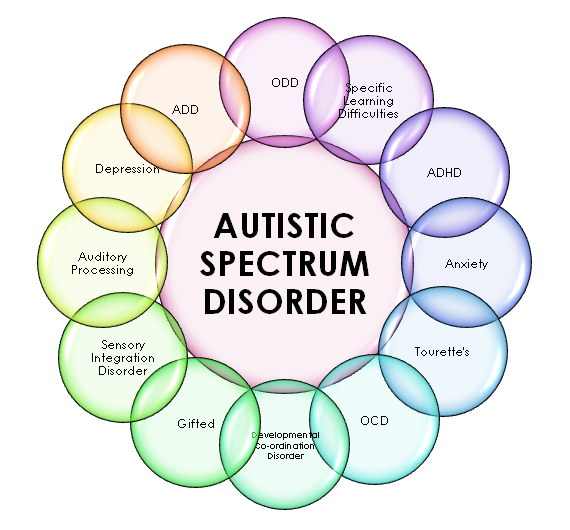The Value of Household Assistance in the Trip with Autism
The Value of Household Assistance in the Trip with Autism
Blog Article
Discovering Autism: Methods for Efficient Interaction and Communication
Reliable interaction and communication with people on the autism spectrum necessitate an extensive understanding of their special requirements and preferences. Methods such as utilizing clear language, making use of aesthetic assistances, and promoting constant routines can substantially improve involvement and decrease anxiety. Additionally, identifying the relevance of non-verbal signs and shared passions leads the way for significant links. However, the complexities of these methods reveal further factors to consider that warrant exploration, specifically in just how they can be adjusted to varied contexts and individual experiences. What might these adaptations resemble in method?
Recognizing Autism Spectrum Problem
Autism Spectrum Condition (ASD) includes a variety of neurodevelopmental conditions identified by challenges in social communication, interaction, and repetitive actions. The term "spectrum" mirrors the diverse symptoms and varying levels of severity experienced by people with ASD. While some may display substantial disabilities, others might display high-functioning qualities, enabling better independence in every day life.
The start of ASD generally happens in very early childhood, with indications often identifiable by age 2. Very early indications may include delayed speech growth, limited eye contact, and problems in recognizing social signs. Although the accurate etiology of ASD stays uncertain, study suggests a combination of genetic and environmental aspects plays an essential function in its growth.
People with ASD usually have one-of-a-kind toughness, such as enhanced focus to information and exceptional memory skills. However, they may battle with understanding abstract principles and taking care of adjustments to regular. As a result, interventions and support tailored to specific demands are necessary for promoting communication and social abilities. Identifying the intricacy of ASD is crucial for promoting awareness, approval, and efficient techniques that promote purposeful interactions with people on the spectrum.

Significance of Clear Communication
Effective interaction is vital for fostering understanding and link, specifically for people with Autism Spectrum Disorder (ASD) Clear interaction not just promotes social communications however also enhances the person's capability to reveal their feelings, ideas, and needs. For people with ASD, the nuances of language can frequently be testing; therefore, utilizing unambiguous and uncomplicated language is necessary.
Furthermore, clear interaction aids lower irritation and anxiety that might occur from misconceptions. When messages are communicated in a straight and constant fashion, individuals with ASD are much better geared up to analyze information properly, which can dramatically improve their social engagement and involvement in numerous settings.
Developing regimens and using visual assistances can further boost clear interaction. These techniques supply individuals with predictable frameworks that assist understanding and retention of info. In addition, proactively being and paying attention person during communications promotes an encouraging setting where individuals with ASD feel valued and comprehended.
Inevitably, focusing on clear interaction not only empowers individuals with ASD however additionally fosters more significant connections with their peers, caregivers, and the broader area, leading the way for inclusive communications and collaborative partnerships. - autism
Non-Verbal Communication Methods
Interaction expands beyond words, and for people with Autism Range Condition (ASD), non-verbal signs play a substantial duty in communications. Non-verbal interaction strategies can include faces, motions, body language, and eye get in touch with, all of which function as important elements for sharing intentions and feelings.
Recognizing and analyzing these non-verbal signals can boost communications with people with ASD. For example, a warm smile or open posture can create an inviting ambience, motivating interaction. Utilizing visual help-- such as photo cards or symbols-- can bridge interaction gaps and help share messages a lot more efficiently.
It is also vital to be conscious of personal room, as individuals with ASD might have various comfort degrees relating to proximity. my response Observing their responses to physical nearness can notify suitable adjustments.

Creating Encouraging Atmospheres
Creating a supportive environment is essential for cultivating positive communications and enhancing the health of people with Autism Spectrum Problem (ASD) Such environments can considerably lower stress and anxiety and create a feeling of safety, permitting people to express themselves much more freely.
To attain this, it is necessary to consider sensory level of sensitivities that individuals with ASD may experience. Modifying the physical room to consist of soft illumination, minimal history sound, and comfy seats can produce a relaxing atmosphere. In addition, making use of regular regimens and clear aesthetic routines can aid individuals prepare for transitions and minimize unpredictability, additional promoting convenience.
Social spaces must be structured to minimize overwhelming stimulations while providing chances for involvement in favored tasks. Helping with locations marked for quiet time can likewise act as a refuge during moments of stress. Significantly, integrating components of choice empowers individuals, enabling them to work out agency in their atmosphere.

Urging Social Interactions
Cultivating social interactions amongst individuals with Autism Spectrum Condition (ASD) requires deliberate strategies that prioritize convenience and engagement. Developing foreseeable routines can aid decrease anxiousness, making social settings much more friendly. Creating structured settings with defined obligations and functions permits individuals to engage without the frustrating stress of unstructured social dynamics.
Including interests and staminas right into social tasks can serve as a driver for communication. For instance, arranging group activities around shared pastimes or subjects of attraction can facilitate natural discussions and links. Furthermore, making use here are the findings of aesthetic supports, such as pictorial schedules or social scripts, can help in comprehending social hints and assumptions.
Modeling proper social actions is crucial - autism. Adults and peers ought to demonstrate effective communication techniques, including energetic listening and turn-taking. Role-playing situations can likewise supply a risk-free area for individuals to practice these skills
Lastly, fostering peer relationships through inclusive practices is essential. Encouraging comprehensive playdates or team trips can produce chances for socialization in a comfortable setting. By implementing these caretakers, approaches and instructors can substantially improve social interactions official statement for people with ASD, promoting their overall social growth and wellness.
Verdict
Finally, reliable interaction and communication techniques are necessary for supporting people with Autism Spectrum Condition. Emphasizing clear language, incorporating non-verbal cues, and developing foreseeable regimens significantly improve engagement and decrease anxiousness. Creating supportive atmospheres promotes risk-free social communications, while urging shared rate of interests facilitates significant connections. Eventually, these methods equip people with autism to navigate social landscapes, promoting their total health and enabling the advancement of long lasting partnerships.
Effective communication and interaction with individuals on the autism spectrum require a detailed understanding of their special demands and choices. Clear interaction not just helps with social interactions however likewise improves the individual's capability to share their ideas, feelings, and demands.Promoting social interactions among individuals with Autism Spectrum Disorder (ASD) calls for willful approaches that prioritize comfort and interaction. By executing these techniques, caregivers and instructors can significantly boost social interactions for people with ASD, advertising their general social development and health.
In final thought, effective interaction and communication techniques are essential for supporting individuals with Autism Range Disorder.
Report this page